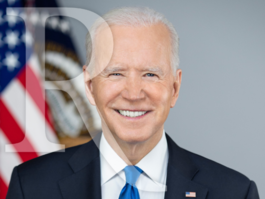Gallup, Come Back. We Missed You
A Commentary by Ted Carroll
America’s gold standard pollster for election season horse-race polling declined to post an entry in 2016’s political derby. The field was poorer for it.
When the news arrived in October 2015 that Gallup was sitting this one out, we, the relative national upstarts at Rasmussen Reports, frankly could not believe it. Gallup, after all, is the national public opinion research firm first made famous by its 1936 prediction that Franklin D. Roosevelt would defeat Alf Landon to remain president of the United States and whose election season survey work thereafter established it as the premier surveyor of all things political. Surely, we thought, Gallup management didn’t really mean their pollsters would go cold turkey on horse-racing just as the 2016 presidential field began its warm-up laps.
Yet Gallup management did exactly that and stuck with their abstinence decision all through the heat of the spring and summer of the 2016 race. They were joined at the last minute - in October of last year - by Pew Research Center, another venerable public pollster, in sitting out making any final projection of the November 8 election day popular vote totals.
At Rasmussen Reports, our surveying all along suggested that the U.S. media was creating a false narrative about the 2016 presidential campaign, a narrative reinforced by most other public pollsters. Controversy was the name of the media game, most of it focused on Republican Donald Trump. Many media outlets, most prominently the New York Times, and most pollsters were saying weeks before Election Day that Democrat Hillary Clinton had already won. But the three daily tracking polls – the Los Angeles Times, IBD/TIPP and Rasmussen Reports – consistently showed a much tighter race.
Among the most fevered – and loudest - disciples of this false narrative were the so-called “polling analysts,” such as Nate Silver’s 538. These analysts did no polling themselves but deigned to rank, decipher and explain the polling work of others. Most produced detailed quantitative constructs that supported Inside-the-Beltway conventional wisdom. All of them flopped badly.
On November 9, 2012, Gallup Editor-in-Chief Frank Newport wrote a post Romney vs. Obama election recap entitled “Polling, Likely Voters, and the Law of the Commons.” In it, Mr. Newport theorized that U.S. polling suffered from a form of overgrazing, fed in large part by the rise of these same so-called analysts whose business model was “much easier, cheaper and mostly less risky to focus on aggregating and analyzing others’ polls.”
Four years later, Mr. Newport’s thesis of overgrazing and diminished quality is substantially proven. In 2016, the American public was poorly served by a pathetic plethora of puerile polling punditry. Based on our own “confidence-in-media” survey results, U.S. media consumers found this work product barely serviceable to wrap fish in.
We hope that Gallup senior management takes note of these dynamics and pays no attention to the increasing stream of 2016 polling autopsy papers from the same infected sources. Come back to the track where the real work of political polling is done, and champions are needed. We’ll be waiting for you at the starting gate.
Ted Carroll is a Partner at media-focused private equity firm Noson Lawen Partners, Rasmussen Reports’ majority shareholder. Rasmussen Reports like Gallup and most other national pollsters target identification of U.S. Likely Voters who determine the popular vote. Rasmussen Reports’ final 2016 presidential election popular vote prediction brought it within one-tenth of one percent of the actual winning popular vote outcome.
Rasmussen Reports is a media company specializing in the collection, publication and distribution of public opinion information.
We conduct public opinion polls on a variety of topics to inform our audience on events in the news and other topics of interest. To ensure editorial control and independence, we pay for the polls ourselves and generate revenue through the sale of subscriptions, sponsorships, and advertising. Nightly polling on politics, business and lifestyle topics provides the content to update the Rasmussen Reports web site many times each day. If it's in the news, it's in our polls. Additionally, the data drives a daily update newsletter and various media outlets across the country.
Some information, including the Rasmussen Reports daily Presidential Tracking Poll and commentaries are available for free to the general public. Subscriptions are available for $4.95 a month or 34.95 a year that provide subscribers with exclusive access to more than 20 stories per week on upcoming elections, consumer confidence, and issues that affect us all. For those who are really into the numbers, Platinum Members can review demographic crosstabs and a full history of our data.
To learn more about our methodology, click here.


